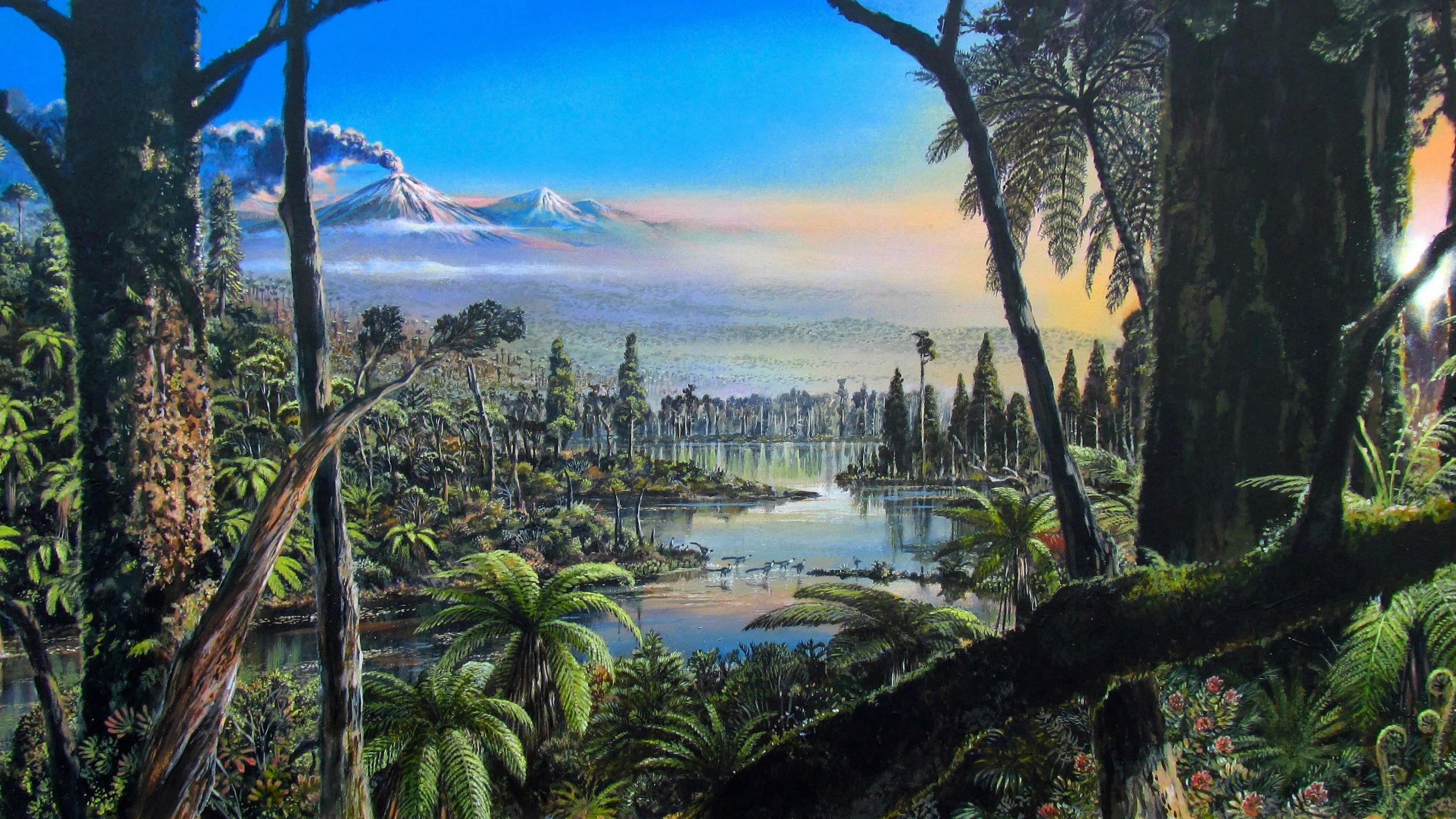The Independent's journalism is supported by our readers. When you purchase through links on our site, we may earn commission.
Fossilised remains of 90-million-year-old rainforest discovered under Antarctic ice
High levels of carbon dioxide and mild climate just 500 miles from South Pole allowed swampy forest to grow before cooler conditions brought ice sheets we see today
The fossilised remains of an “unexpected” temperate rainforest which grew 90 million years ago in west Antarctica have been discovered by scientists.
Analysis of sediment cores taken from the west Antarctic shelf revealed forest soils, roots, pollen and spores, indicating the continent had an “exceptionally warm climate” during the mid-Cretaceous period when dinosaurs roamed the Earth.
The international team of scientists said the rainforest in Antarctica would have resembled the forests in New Zealand today.
The mid-Cretaceous was the warmest period in the past 140 million years. Sea levels were 170 metres higher than today and sea surface temperatures in the tropics are believed to have been as high as 35C.
Until now, little was known about the environmental conditions south of the Antarctic Polar Circle, the scientists said.

The evidence of Antarctica’s rainforest comes from a core of sediment taken from the seabed near the Pine Island glacier in the west of the continent in 2017.
“During the initial shipboard assessments, the unusual colouration of the sediment layer quickly caught our attention; it clearly differed from the layers above it,” said study co-author Dr Johann Klages, a geologist at the Alfred Wegener Institute Helmholtz Centre for Polar and Marine Research in Germany.
The team CT-scanned the sediment core and found what they described as “a fascinating dense network of roots spreading through the entire soil layer”.
They said the 90-million-year-old soil is so well preserved it contains countless traces of pollen, spores, remnants of flowering plants and the researchers could even make out individual cell structures.
Co-author Professor Ulrich Salzmann, a palaeoecologist at Northumbria University in the UK, used the preserved pollen and spores to reconstruct the past vegetation and climate.
He said the process of reconstructing past environments and climates was similar to working on a huge jigsaw puzzle, which ultimately revealed an amazingly detailed picture of the past Antarctic landscape.
“It was particularly fascinating to see the well-preserved diverse fossil pollen and other plant remains in a sediment deposited some 90 million years ago near the South Pole,” he said.
“The numerous plant remains indicate that the coast of west Antarctica was, back then, a dense temperate, swampy forest, similar to the forests found in New Zealand today.”
When they pieced together their analyses, the international research team found evidence for a mild climate around 500 miles from the South Pole, with annual mean air temperatures of about 12C.
Summer temperatures averaged 19C and water temperatures in rivers and swamps reached up to 20C. This was despite a four-month polar night, meaning for a third of every year there was no life-giving sunlight at all. They also found that the amount and intensity of rainfall in west Antarctica was similar to that in Wales today.
The scientists said such climactic conditions could only be achieved with a dense vegetation cover on the Antarctic continent and the absence of any major ice sheets in the South Pole region.
The research also revealed carbon dioxide concentration in the atmosphere was also far higher than previously estimated.
Co-author and climate modeller Professor Gerrit Lohmann, from the Alfred Wegener Institute, said: “Before our study, the general assumption was that the global carbon dioxide concentration in the Cretaceous was roughly 1000ppm [parts per million]. But in our model-based experiments, it took concentration levels of 1120 to 1680ppm to reach the average temperatures back then in the Antarctic.”
As such, the study shows both the enormous potency of carbon dioxide, and how essential the cooling effects of today’s ice sheets are, the team said.
The study will inform scientists working to understand what caused the climate to cool so dramatically, which allowed the ice sheets we see today to form.
The research was published in the journal Nature.
Join our commenting forum
Join thought-provoking conversations, follow other Independent readers and see their replies
Comments